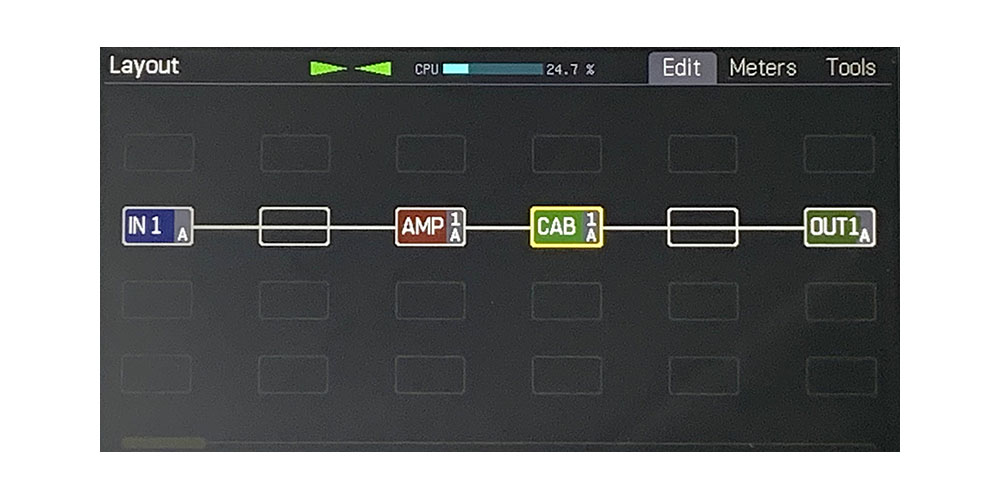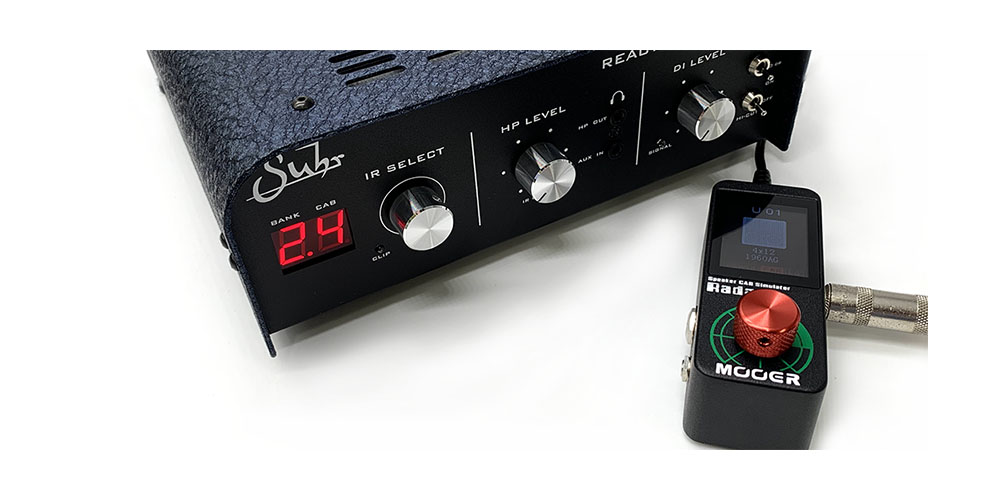IR Utilization
IR Usage
With multi-effectors, amp simulators or DAW software, our cabinet IR files can digitally recreate the tone of a physical setup. To understand how it works, it is important to understand the inner workings of electric guitars first.
Until sound is output by electric guitars.
An electric guitar generates electrical signals by electromagnetic induction of a pickup that uses magnets and coils to vibrate the strings. This electric signal is very weak and cannot drive a speaker as is because it is a high impedance signal.
Guitar amps such as combo amps and amp heads first amplify the voltage with a preamp designed to raise the level of the weak electrical signal generated by the pickup. Although the preamplifier will produce a sufficient voltage level for an electrical signal, it does not have enough power to drive the extremely low impedance speakers (8 or 16 ohms) used in typical guitar amps. Therefore, a power amplifier is used so that the signal can reach the speakers. Some guitar amps use vacuum tubes, but the basic concept and circuit configuration are the same for amps that use transistors, FETs, or ICs.
Signal flow inside an Amp simulator
Amp simulators using digital technology, which have been used by many guitarists in recent years, reproduce sounds close to actual guitar amps by modeling the circuits of analogue guitar amps. In analogue, the actual amplifier head, cabinet, and microphone for picking up the sound are each extremely important elements of the sound, but the digital simulator uses digital modeling to perform arithmetic processing to reproduce the sound.

Utilization of DYNAX IR
DYNAX IR has 78 Standard IR files for each cabinet model (18 types of microphones with 4 positions) and 18 Advanced IR files that are DYNAX’s own blend. We provide a total of 96 IR files per cabinet.
Replace the standard IRs with ours to achieve overwhelming short audio latency and realistic sound.
Our Cabinet IR files can be used for various purposes such as recording, live concerts, and distribution. It can easily reproduce the quality of sound recorded in a professional recording studio using the cabinet and microphone that you always wanted. The DYNAX IR is sure to excite your guitarist’s creativity.
Utilization of Cabinet IR in an Amp Simulator
When using DYNAX IR in an amp simulator, there are two ways depending on the model: loading it into the CAB effect block, and loading it into the IR effect block intended for loading IR data. If you use the CAB block, we recommend setting the model’s standard Mic to “None”. When you wish to change the microphone, please use a different IR file as we have separate files for each mic position for every microphone, for each cabinet.
In professional recording, it is common to use microphones with different acoustic characteristics, such as dynamic microphones and condenser microphones, for multi-track recording. Then recorded tracks are mixed in a well-balanced manner to match the song. Our DYNAX IR files can be used for the same effect if the amp simulator can load multiple IR data into the CAB block.
Our Advanced IR files can achieve the same effect as loading multiple IR files even if your amp simulator can only use one IR.
Utilization in cabinet IR IR loader
The IR loader is hardware that has been released by many manufacturers in recent years. There are two types of IR loaders for single cabinet simulation. There are two types of IR loaders.
The first type takes an actual guitar amp’s speaker out signal and then uses dummy loading to attenuate it to protect the amplifier. Fryette Power Load IR and Suhr Reactive Load IR are typical models. Then, cabinet simulation is performed using the IR data to the signal lowered to the LINE level. The simulated signal can be connected to an audio interface, etc. This way silent recording is done without sounding the actual cabinet.
The other is a compact effector-type IR loader. Typical models include Mooer Rader and Strymon IRIDIUM. These do not have the function to attenuate the signal of the speaker output of the guitar amp, but the signal of the line out and the signal of the effect pedal can be run through them.
In recent years you can simulate the sound like a tube amp. IR loaders have a USB terminal, and by connecting to a PC you can add IR files that are not preinstalled.

Utilization in cabinet IR DAW software
Use the Convolution Reverb plug-in to use our cabinet IR files in computer-based DAW software. Originally, IR data was used to create Convolution Reverb, which reproduces the spatial sound field characteristics of an actual concert hall, etc., with software. Therefore, by importing cabinet IR data into Convolution Reverb, it can be used as a cabinet simulator. The Convolution Reverb plugin is provided as standard for free in major DAW software, such as Logic’s SpaceDesigner and Cubase’s REVerence. WAVES IR-L has a paid one.
By loading the cabinet IR data into these plug-ins and inserting the plug-ins into the recorded guitar tracks, you can get a cabinet-simulated sound. A line-recorded guitar track gives the best result. Additionally, you can further enhance a track recorded with a physical setup for an even better mood. If you use a DAW, you can use multiple plug-ins as long as the processing power of your PC allows.
Mix IR3 is IR loader dedicated software specialized for cabinet IR provided by Red Wirez. Compatible with both Mac / Windows, it can be used as a stand-alone, or as a DAW plug-in as it supports major plug-in formats such as VST, AU (Audio Unit), and AAX (Pro Tools). A special feature of the Mix IR3 is the ability to load multiple IR data. It is very easy to balance and mix the sound of IR data with different cabinets and mic positions and export it as a single set of IR data that has the desired effect. It is an essential item for a home-recording guitar list.

Setting up cabinet IR
When using his cabinet IR as an amp simulator or DAW plug-in, you can change the sound output by imagining the connection order of the actual guitar amp, speaker cabinet and effector.
For example, if you imagine a combo amp with built-in spring reverb, the connection order is guitar → preamp → reverb → power amp → cabinet IR. In this case, since the reverb effect is put in front of his cabinet IR, which replaces the speaker, the IR also affects the reverb’s effect.
However if the reverb is added during mixing after the recording, the IR effect is not affected by the reverberation. By using IRs, it is possible to make connections that no guitarist in the world has ever thought of. The possibilities of DYNAX Cabinet IR are endless.

